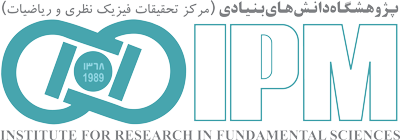“School of Astronomy”
Back to Papers HomeBack to Papers of School of Astronomy
| Paper IPM / Astronomy / 15614 |
|
||||||
| Abstract: | |||||||
|
IIC 1613 is a Local Group dwarf irregular galaxy at a distance of 750 kpc. In this work, we present an analysis of the star formation history (SFH) of a field of \sim200 square arcmin in the central part of the galaxy. To this aim, we use a novel method based on the resolved population of more highly evolved stars. We identify 53 such stars, 8 of which are supergiants and the remainder are long period variables (LPV), large amplitude variables (LAV) or extreme Asymptotic Giant Branch (x-AGB) stars. Using stellar evolution models, we find the age and birth mass of these stars and thus reconstruct the SFH. The average rate of star formation during the last Gyr is \sim3\times10^{-4} M_\odot yr^{-1} kpc^{-2}. The absence of a dominant epoch of star formation over the past 5 Gyr, suggests that IC 1613 has evolved in isolation for that long, spared harrassment by other Local Group galaxies (in particular M 31 and the Milky Way). We confirm the radial age gradient, with star formation currently concentrated in the central regions of IC 1613, and the failure of recent star formation to have created the main HI supershell. Based on the current rate of star formation at (5.5\pm2)\times10^{-3} M_\odot yr^{-1}, the interstellar gas mass of the galaxy of 9\times10^7 M_\odot and the gas production rate from AGB stars at \sim6\times10^{-4} M_\odot yr^{-1}, we conclude that the star formation activity of IC 1613 can continue for \sim18 Gyr in a closed-box model, but is likely to cease much earlier than that unless gas can be accreted from outside.
Download TeX format |
|||||||
| back to top | |||||||



















